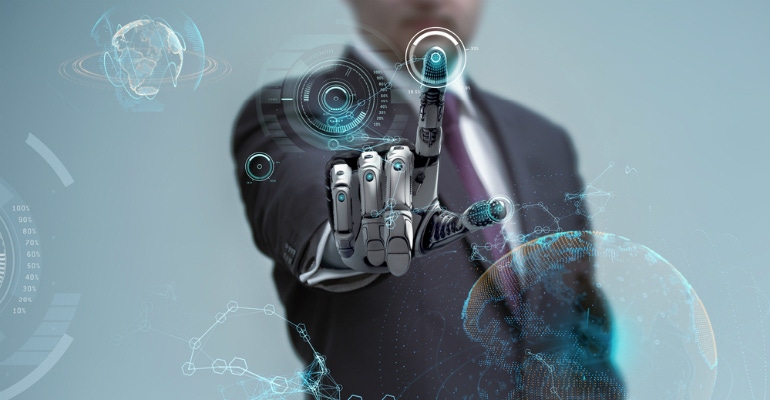Cisco is taking steps to create a single network architecture to span multiple domains.
June 10, 2019

CISCO LIVE 2019 — Cisco Systems continues to infuse artificial intelligence and machine learning throughout its networking architecture and stretch more of its capabilities out to the internet of things and the edge. It’s part of a larger plan to create a single network architecture that will support that multiple domains that make up a modern enterprise.
In an increasingly cloud- and data-centric world, applications and data are now accessible from myriad places – from the data center and cloud to the devices that making up the fast-growing IoT – and networks need to be able to support not only workloads in the data center, branch and campus areas but also the cloud, the edge and service provider environments, according to Scott Harrell, senior vice president and general manager of Cisco’s enterprise networking business.
At the same time, employees and other users are becoming much more mobile and want to be able to access any application at any time and from any device and on any network.

Cisco’s Scott Harrell
Managing and securing such a complex environment is a complex challenge and AI and machine learning can ease some of the headaches, Harrell said during a press conference Monday at Cisco Live 2019 in San Diego. The technologies also can help enterprises pull greater insights and information from the vast amounts of data they’re gathering than humans can.
“Now, with things like big data and AI, machines can come along and free us from our mental limitations and allow us to do more creative things and more incredible things than we ever could before,” Harrell said.
Cisco is introducing AI Network Analytics, which will be a standard part of the company’s DNA Assurance offering, with the next release of its DNA Center network management automation offering this summer.
Harrell pointed out that machine learning will help in the area of detecting security and other problems within the network. Traditional companies have created baselines of normal behavior within the network and then have the management system send out alerts when behavior strays outside of those baselines. The problem is that not all baselines apply to all companies, and enterprises can find themselves responding to large numbers of alerts, many of which aren’t an issue.
“What we do with machine learning is rather than using static baselines, we learn what is normal for your environment and we say that we’re only going to trigger an alert when we see something that’s abnormal for your environment,” Harrell said.
Working with 11 customers over a three-month period, Cisco said that using DNA Center and DNA Assurance, the customers would have found about 8,000. With machine learning, only 303 alerts were sent out based on their situations, about a 75% drop over the number that normally would have been issued.
“It’s a huge, huge increase in IT efficiency,” Harrell said.
Cisco also is integrating its SD-Access with SD-WAN and Application Centric Infrastructure (ACI) offerings to simplify the process of bringing users and devices onto the network, authorize them and segment them across branch, campus, data center and cloud networks. The segmentation is important to securing data and applications by denying unauthorized access to the network.
It’s also another step in Cisco’s plant to create a single networking architecture that can stretch across the multiple domains. The company has bulked up what it can do within …
… the data center, campus, cloud and other domains, and now the plan is to integrate those domains through a common architecture. These integrations also will be available in the next DNA Center release.
The AI and machine learning services will use data not only from a single company but also bring in aggregated – and anonymized – data from other customers. Data is the key driver of machine learning and Cisco has more than three decades of data built up.
Cisco competitors like Arista Networks, Hewlett Packard Enterprise’s Aruba Networks and VMware are all adopting AI and machine learning for network analytics and such capabilities like network segmentation for greater security and control. However, the company has the broad portfolio and security capabilities to create a more complete, integrated architecture while competitors are using acquisitions and partnerships, chairman and CEO Chuck Robbins said during a meeting with journalists.

CEO Chuck Robbins speaks to the media at Cisco Live 2019 in San Diego.
“Our advantage is that we’re going to have one seamless architecture and we have technology in all of them, so it should give quite a good head start,” Robbins said.
Patrick Moorhead, principal analyst with Moor Insights and Strategy, told Channel Futures that what Cisco is doing around AI, machine learning and the edge isn’t a surprise, but that it’s a “more mature articulation of how that happens.”
“It’s the most complete vision for Cisco on that, with the exclamation point of multiple domains,” Moorhead said. “Data is flowing through the network; therefore, the point at which to analyze it is the network.”
In the area of IoT, Liz Centoni, senior vice president and general manager of IoT at Cisco, noted that more than 65,000 customers have IoT programs underway, but that only 40% of them have moved beyond the proof-of-concept stage due to concerns around security, complexity and scaling. Centoni also said a large customer told her that they don’t know about 40% of the assets sitting in their environments.
Cisco is looking to address those concerns, such as with the announcement earlier this month that the vendor is buying Sentryo, which offers products that drive device visibility and security for industrial control system (ICS) networks. The deal is expected to close later this year.
The company also released the IR1101 industrial edge router, which supports Cisco’s SD-WAN offering to connect and handle data from IoT devices. It also is addressing industrial IoT needs with the Catalyst IE3400 Heavy Duty Series switch, which will be released in the summer, and the Catalyst IW6300 Heavy Duty access points in the fall.
Read more about:
VARs/SIsAbout the Author(s)
You May Also Like


